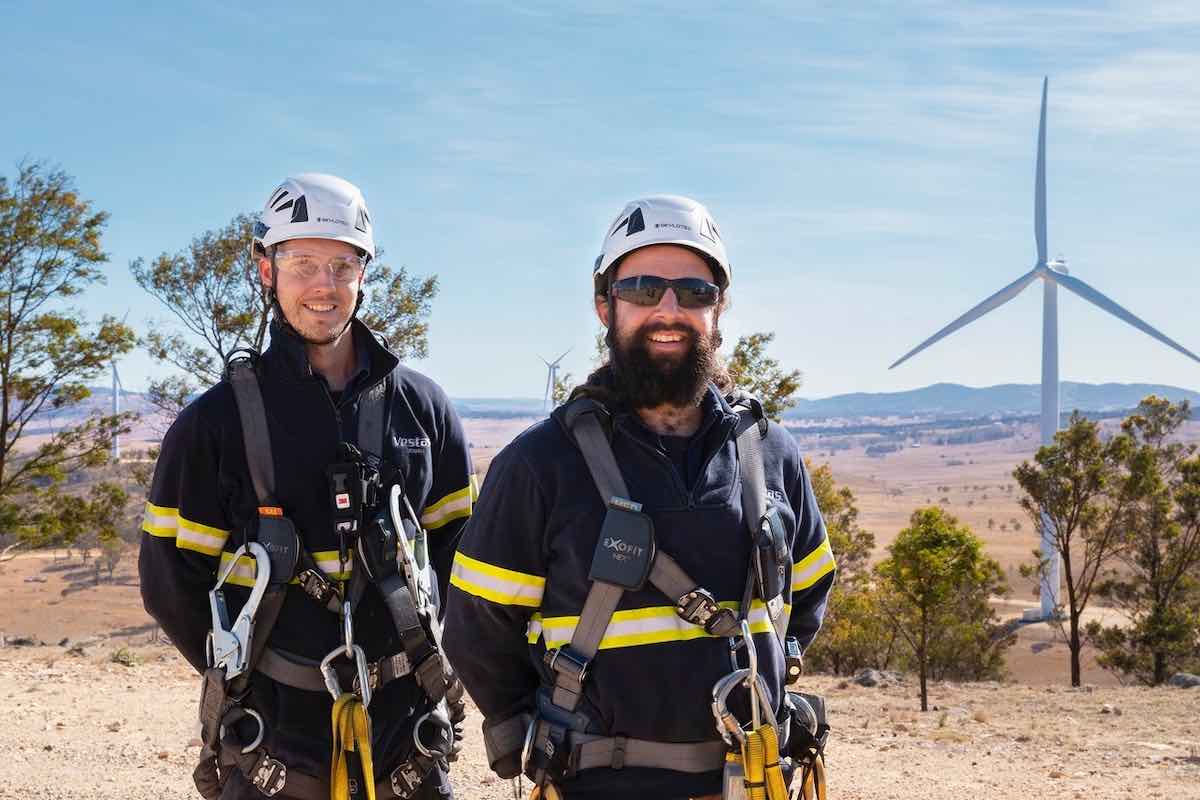Australia needs to find people to fill up to 12,000 positions in the renewable energy industry in the next two years, and almost three times that number if it wants to become a hydrogen “superpower”.
A new analysis from the Institute for Sustainable Futures at UTS has outlined the vast labour shortages and challenges of meeting the so-called “step change” and “hydrogen superpower” scenarios laid out in the Australian Energy Market Operator’s Integrated System Plan.
The “step change” has already been adopted by the federal Labor government as its defacto target of 82 per cent renewables by 2030, while the hydrogen superpower scenario is the only one modelled to date that is consistent with capping global warming at 1.5°C.
Jay Rutovitz, research director at the Institute for Sustainable Futures at UTS, says the 12,000 labour force requirement is solely focused on jobs in building and maintaining energy storage, power plants and transmission lines in the National Energy Market (NEM).
It does not include extra jobs in mining critical battery metals, construction, the future energy equipment recycling industry, nor any of the upcoming jobs in energy efficiency, demand-side and energy management, or electrification.
Rutovitz has just finished a major report into the workforce needs of the ISP projections, and her conclusions are that we need to start planning now, and end the boom-bust cycle that renewable energy has become known for over the last two decades.
“If you want to be sure of work just train as an electrician,” she told RenewEconomy.
“Or an engineer, or any trade. We will need them all.
“We need to do a big expansion of skills and we need to start planning for it now. We also need to put a lot of effort into training programs so we don’t have to bring people in [from offshore or outside regional communities] and we get the benefits in the areas where infrastructure must be built.”
Hydrogen goals a step too far
The Australian Electricity Workforce for the 2022 Integrated System Plan: Projections to 2050 report looked at four scenarios: the slow change which is so unlikely as to be irrelevant; the step change which the energy industry considered most likely and requires that extra 12,000 people by 2025; and the hydrogen superpower and the offshore wind scenarios.
The step change requires an overall electricity sector employment to grow by 37,000 from 2023 to peak at 81,000 in 2049.
The hydrogen superpower scenario is the most demanding because of the sheer scale of generation that needs to be installed for a green hydrogen industry to get off the ground in the 2030s.
Rutovitz is not convinced Australia can develop the number of skilled people required for that future: 31,000 extra workers by 2025 to start building out extra capacity of renewables generation and storage, peaking at 237,000 in the 2040s.
“The step change we can certainly do. The hydrogen superpower, how that is put in the ISP, I don’t think we could do that magnitude of scale-up that quickly,” she said.
The offshore wind scenario reveals the jobs conflict within the renewables industry: offshore wind displace jobs in onshore wind and utility solar — not coal.
This is because the nature of offshore wind — bigger, higher capacity turbines that require fewer people to maintain and different skills to build reduce the need for those other sources of power.
Offshore wind would see jobs numbers only rise by 29,000 and peak at 73,000 in 2049.
No more boom-bust renewables projects
One of the big criticisms today of renewable energy is that jobs are like mining: construction workers fly in and fly out from regions, and few jobs are left once developments are finished.
Under all of Rutovitz’s scenarios, construction dominates the jobs market through the 2020s as the build-out of renewable energy, transmission and storage accelerates.
But she says by the 2040s well over half of the workforce will be in regular operations and maintenance roles.
She also believes the boom-bust nature of renewable energy jobs can easily be solved.
“What NSW is doing is really smart. They are doing auctions for renewable energy zone developments in phases to smooth the development cycles. What you get in the ISP tends to be last minute which leads to boom and bust cycles, so we need to smooth those out.
She suspects Victoria will quickly follow that lead.
A key recommendation was for AEMO to include workforce projections in the next ISP, in 2024. Given the organisation was a partner in the report, Rutovitz is optimistic workforce planning will become part of AEMO’s strategy in future.
Australian governments have traditionally been reluctant to impose conditions on companies in the resources sector, but are seeing the value in taking actions like NSW’s phased approach to development.
Rutovitz expects to see more conditions around local content, training, and the employment of First Nations people and women as part of government renewable energy contracts.
“It’s changing because people are seeing this presents so many opportunities,” she says.
“Social licence is also very important for renewable energy developments, because it’s not the same as having a single large power station where the benefits are really obvious. It’s much more spread out and uses a construction workforce which can be more fly-in fly-out. People are seeing that this creates problems, so it’s about making sure that we do see the benefits from it, from a regional sense and a national sense.”
Increased training will mean ongoing jobs for people in rural towns like Mildura.
Skills shortages, however, risk the achievement of the ISP’s optimal development path through delays, increased project costs from wage inflation, recruitment costs and liquidated damages, and increased cost of capital to reflect increased risk.










